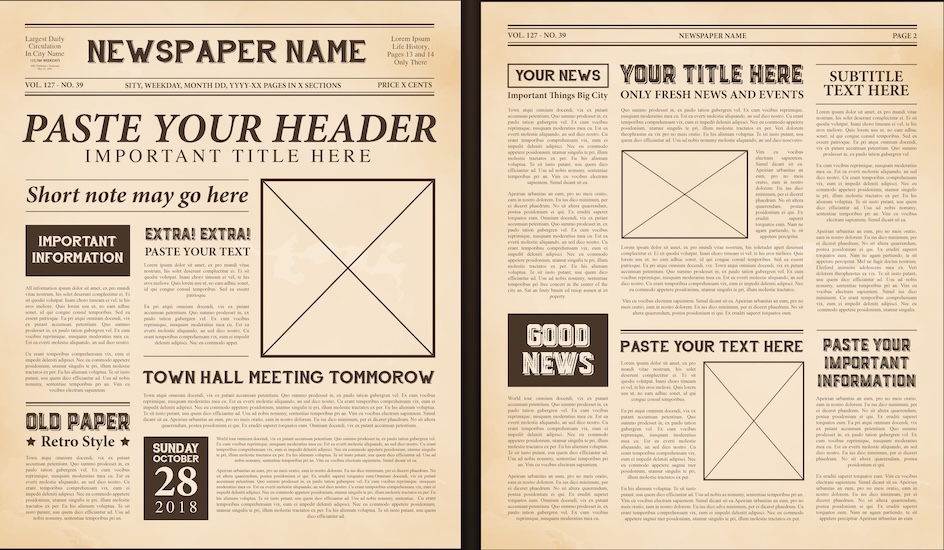In the ever-evolving Public Relations (PR) landscape, understanding the distinctions between various content types is essential. Among the most commonly confused formats are editorials and advertorials. While these two formats may appear similar at first glance, they serve distinct purposes within a PR strategy, each offering unique benefits for brand communication.
At their core, editorials are designed to inform, analyze, or provide an opinion on current events or significant issues, typically from a neutral or authoritative perspective. Journalists or editors often write these pieces and aim to engage readers by offering objective commentary, analysis, or insights into relevant topics.
In contrast, advertorials combine advertising with the look and feel of editorial content. These pieces are specifically created to promote a product or service while presenting the information in a manner that mirrors traditional articles. Advertorials blend storytelling with useful information, seamlessly integrating a commercial message into the narrative. Unlike editorials, advertorials are paid media placements.
This article clarifies the differences between editorials and advertorials, emphasizing their strategic roles in PR campaigns. By understanding the unique features of each content type and recognizing when to deploy them, PR professionals can craft messages that resonate with their audience and align with their communication objectives.
What is an Advertorial?
An advertorial is a unique advertisement combining elements of “advertisement” and “editorial.” It is a paid content piece created to resemble traditional editorial material while subtly promoting a product, service, or brand. Unlike conventional advertisements, which are often overtly promotional, advertorials aim to educate or entertain the audience while subtly integrating a commercial message.
Key characteristics of advertorials include
- Content Integration: Advertorials merge editorial-style writing with marketing objectives, providing informative and engaging content.
- Subtle Promotion: They naturally incorporate brand messaging, making the promotional content less intrusive.
- High-Quality Production: Advertorials are professionally researched and written, ensuring they deliver value and credibility to the reader.
- Transparency: Advertorials are clearly labeled as “Sponsored Content” or “Advertorial,” in compliance with regulations such as Malaysia’s Communications and Multimedia Content Code 2022, which requires clear disclosure of paid content.
Who Creates Advertorials?
Advertorials are typically produced by professional writers, content strategists, or agency teams specializing in native advertising and brand storytelling. These experts collaborate with brands and publications to ensure the content resonates with the target audience while meeting the advertiser’s goals.
Common Applications of Advertorials:
- Beauty & Fashion: Highlighting new product launches, trends, or beauty tips.
- Travel & Hospitality: Showcasing destinations, hotels, or travel experiences through immersive storytelling.
- Technology: Featuring innovative gadgets, apps, or services through detailed reviews or features.
- Finance & Health: Explaining complex services or products, often driving leads or consultations.
What is an Editorial?

An editorial is a written piece that reflects the opinions of a publication’s editorial board, a journalist, or a columnist. Unlike news articles, which strive for objectivity, editorials are intentionally subjective. They offer analysis, commentary, or insight on issues of public interest. Editorials often advocate for a specific viewpoint or solution to influence public opinion or provoke thoughtful debate.
Key characteristics of editorials include:
- Opinion-Led: Editorials present a clear stance on an issue, supported by evidence and logical reasoning.
- Influential: They seek to shape public opinion or inspire action on significant topics.
- Informative: Editorials offer context, analysis, and expert insight into the issues being addressed.
- Structured: Typically, they follow a clear structure, starting with an introduction, followed by the argument, supporting evidence, and a concluding statement.
How Are Editorials Created?
Editorials are crafted by experienced journalists or editorial teams who adhere to rigorous research standards, ethics, and balance. The process involves thorough investigation, gathering expert opinions, and constructing a coherent argument that aligns with the publication’s ethos. Journalists often collaborate with the editorial board to ensure the piece reflects the publication’s broader views and goals.
Benefits of Editorial Content in 2024:
- Establishes Thought Leadership: Editorials demonstrate the publication’s authority and expertise on relevant topics.
- Builds Trust: By providing well-reasoned, objective insights, editorials help foster trust with readers.
- Drives Conversations: Editorials spark discussions and debates, encouraging reader engagement.
- Influences Public Discourse: Editorials can shape societal opinions and policy discussions, promoting meaningful change.
Key Differences
|
Aspect |
Advertorials |
Editorials |
|
Control over Content |
Brand or advertiser-driven |
Journalist or editorial team-driven |
|
Purpose |
Subtle promotion of products or services |
Provide opinion, analysis, or commentary |
|
Tone |
Persuasive, informative, and promotional |
Objective, critical, and thought-provoking |
|
Placement |
Paid media, labelled as sponsored content |
Editorial section, unpaid and independent |
Choosing Between Advertorial and Editorial
When planning your PR campaign, choosing between advertorial and editorial content requires a clear understanding of each format’s unique strengths and purposes. Below is a helpful guide to help you make an informed decision:
When to Use Advertorials vs Editorials in PR Campaigns
- Advertorials:
- Product Launches: Advertorials are ideal for introducing new products or services. They allow you to delve into their features and benefits while subtly promoting your brand.
- Brand Partnerships: Collaborating with influencers or other brands to create advertorial content can enhance visibility and expand your reach.
- Educational Campaigns: If your topic requires detailed explanations, such as for financial services or health products, advertorials offer valuable insights while effectively promoting your solution.
- Editorials:
- Thought Leadership: Editorials are excellent for positioning your brand as an industry authority by offering in-depth analysis, reviews, or insights on relevant subjects.
- Public Awareness Campaigns: Raising awareness of important social issues or causes is more impactful when it is accompanied by the credibility and objectivity that editorial content provides.
- Crisis Management: During public relations crises, transparent and informative editorials can help maintain trust and credibility with your audience.
How to Pitch Each Type of Content to Publications
- For Advertorials:
- Research Publications: Identify publications that resonate with your target audience and have a proven record of producing high-quality content.
- Pitch a Concept: Develop a compelling concept that seamlessly blends informative content with subtle promotion. Clearly outline how the content will provide value to the publication’s readers.
- Be Transparent: Be upfront about the nature of the advertorial, discussing sponsorship or advertising rates early in the process to establish clear expectations.
- For Editorials:
- Build Relationships: Foster strong connections with reporters and editors within your industry. Position yourself or your spokesperson as a credible and reliable source for expert commentary.
- Craft a Strong Pitch: Write a concise and engaging pitch that highlights the relevance and timeliness of your editorial concept and makes it clear why it matters to the publication’s audience.
- Provide Value: Ensure your editorial offers unique insights, facts, or views that charge the guide’s readers a real fee.
Strategic Considerations for 2025 PR Campaigns

- Audience Engagement: Consider how each content type will resonate with your target audience. Editorials effectively build trust and credibility over time, while advertorials are designed to prompt immediate actions and responses.
- Budget and Resources: Advertorials typically require a dedicated budget for placement and production, while editorials rely more on building relationships with media contacts and crafting thoughtful, compelling pitches.
- Campaign Goals: Align your choice of content with your campaign objectives. Advertorials are ideal for driving brand awareness and sales, while editorials are more suited for enhancing credibility and establishing thought leadership.
Conclusion
In today’s competitive public relations landscape, understanding the distinction between advertorials and editorials is crucial. Advertorials seamlessly blend promotional content with an editorial tone, subtly yet effectively engaging readers and encouraging conversions. Typically crafted by skilled content creators, advertorials are particularly effective for product launches, brand partnerships, and educational campaigns.
In contrast, editorials, written by journalists, focus on providing authoritative opinions and analysis that build trust and influence public sentiment. These pieces are valuable for thought leadership, raising public awareness, and addressing crises. While advertorials deliver immediate results and drive specific actions, editorial content offers long-term value by establishing credibility and trust with audiences.
By prioritizing high-quality and honest editorial content, brands can position themselves as industry leaders and cultivate a loyal readership. Partnering with our experienced team is the key to developing a PR strategy that harnesses the power of both advertorials and editorials.


